Tired of Flies? Here’s How to Actually Get Rid of Them for Good
I’ve spent a lot of time in places where being clean isn’t just a suggestion—it’s the law. From running restaurant kitchens to helping folks with pest problems in their own homes, I’ve learned one simple truth. Flies aren’t just a random annoyance. They’re a big, buzzing sign that something in your environment is giving them exactly what they want: food and a place to raise a family.
In this article
Honestly, getting rid of them for good has nothing to do with finding some magic spray. It’s about playing detective, figuring out what they’re after, and then cutting them off. It’s a process, for sure, but once you learn to see your home through a fly’s eyes, the solutions become surprisingly simple.
So, let’s break down the same game plan the pros use. We’ll cover how to clean like you mean it, how to build a fortress against them, and how to strategically trap the ones that still sneak in. It’s a strategy focused on long-term prevention, not just constant chemical warfare.
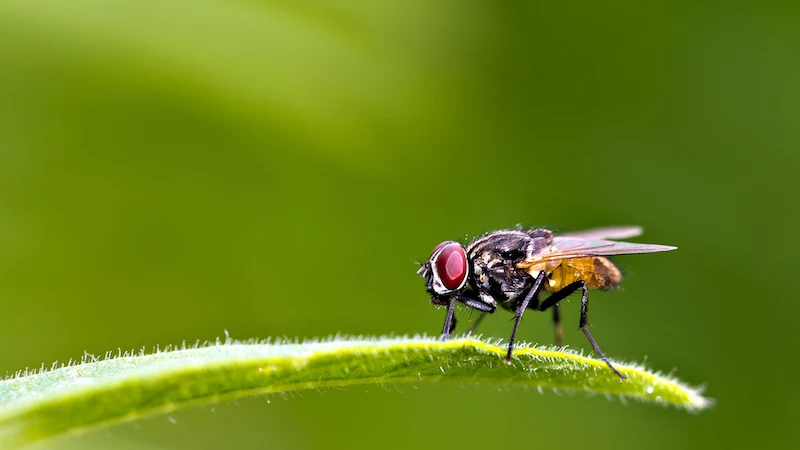
First, Know Your Enemy
Before you can win the war, you’ve got to know who you’re fighting. Not all flies are created equal, and figuring out which one is bugging you is the key to finding their home base.
You’ve got your usual suspects:
- The Common House Fly: This is the classic, dull-gray pest you see everywhere. These guys are all about filth. They thrive in garbage, pet waste, and any kind of rotting organic stuff. And they work fast. In warm weather, one fly can become hundreds in about a week. That’s why a small problem can feel like an overnight invasion.
- The Fruit Fly: Tiny, tan, and obsessed with that overripe banana on your counter or the little bit of spilled juice in the bottom of the recycling bin. They are drawn to anything fermenting. A single forgotten apple core is a five-star resort for them.
- The Drain Fly: If you see little, fuzzy, moth-like flies hopping around your sinks or shower, you’ve got these. Heads up! They aren’t coming up from the sewer. They’re breeding in the gross, slimy gunk that builds up inside your pipes and garbage disposal. Killing the adults is useless if you don’t scrub out their nursery.
- The Cluster Fly: These are a bit different. They’re a little larger and slower than house flies and, surprisingly, they don’t care about your garbage. Outdoors, they’re parasites on earthworms. The problem starts in the fall when they look for a warm place to spend the winter, and they often choose your attic or wall voids. Then, on a warm, sunny winter day, they wake up and wander into your living room, confused.
By the way, a fly’s whole body is built to spread germs. They can’t chew, so they spit digestive juices onto their food to liquefy it, then slurp it up. Think about that for a second. Every single surface they land on could be contaminated with whatever they last ate. If that doesn’t motivate you, I don’t know what will.
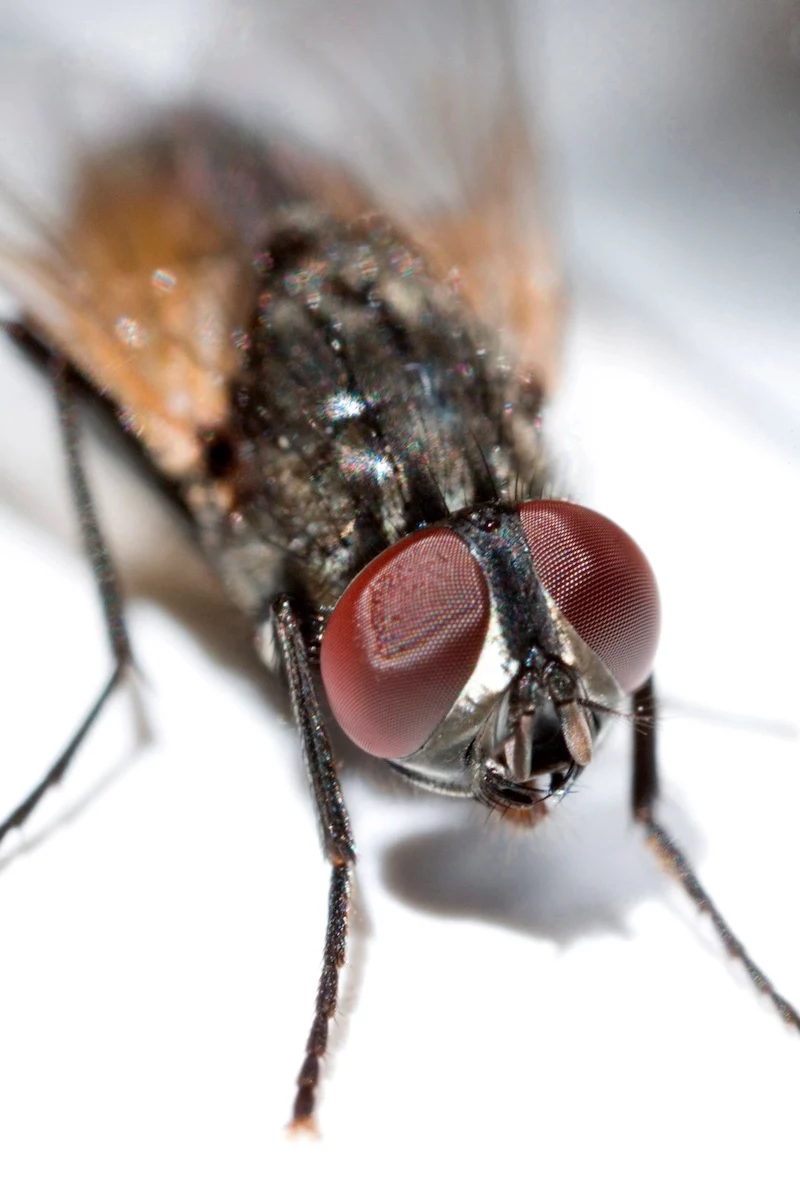
The Real Secret: Next-Level Sanitation
In any professional kitchen, pest control is 90% cleaning. You can set a thousand traps, but if you’re offering an all-you-can-eat buffet, they’ll always find a way in. This means going beyond a quick wipe-down.
Your Trash Can is Public Enemy #1
A garbage can is a fly’s paradise. Shutting it down is non-negotiable.
First, get a can with a solid, tight-fitting lid. This is your most basic defense. I’d recommend a sturdy plastic or metal one, which can run you anywhere from $30 to $80, but it’s worth it because they don’t hold onto smells like cheaper, thinner plastic. In the heat of summer, take the kitchen trash out every single day, even if it’s not full. Rotting food can become a maggot-fest in under 24 hours.
And please, clean the can itself! I once had a client who swore her kitchen was spotless, but a fly problem just wouldn’t quit. The culprit? A single, leaky juice box had created a sticky puddle at the bottom of her ‘clean’ recycling bin. Once a week, wash your cans. A simple mix of a quarter-cup of bleach in a gallon of hot water works wonders. Let it sit for 10 minutes, scrub it, rinse it, and let it dry completely in the sun.
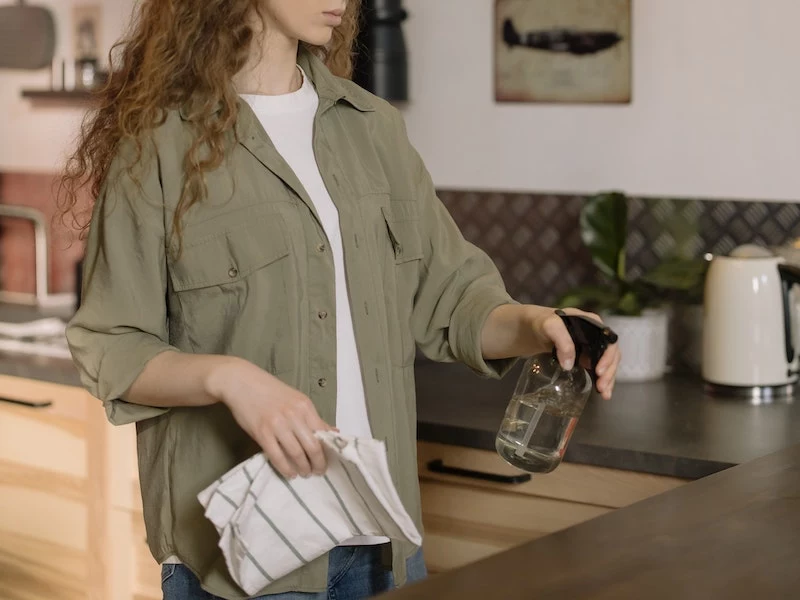
Quick tip: Sprinkle a layer of baking soda in the bottom of the clean, dry can before you put a new bag in. It helps absorb odors and moisture from any future leaks.
Deep Clean Your Kitchen
Flies find food in the most overlooked spots. A couple of times a year, you need to pull out your refrigerator and stove. You might be horrified by what’s back there, but that lost potato chip is a feast for insects.
For your drains, especially if you suspect drain flies, a chemical drain opener won’t cut it. You need to physically remove the slime. Get a long, stiff-bristled pipe brush (you can find one online for about $10) and scrub the inside of the pipe as far down as you can. After that, an enzymatic drain cleaner is a great maintenance tool. For the garbage disposal, I swear by this method: pour half a cup of baking soda down, follow it with a cup of white vinegar, let it fizz for 15 minutes, and then flush it all with boiling water.

Fortify Your Home: Block Every Entry Point
The best way to keep flies out is to literally block them. This is a one-and-done job that pays off forever.
Start with your window and door screens. Inspect them for even the tiniest rips or holes. A small tear is a giant welcome sign for a fly. You can grab a screen patch kit at any hardware store for about $5. Also, make sure the screen frame sits flush against the window frame with no gaps.
Next, walk the perimeter of your house and seal up any cracks. If you can see daylight under your door, you need new weather stripping (around $10-15 per door) or a door sweep. For gaps around window frames or where utility pipes enter the house, you’ll need caulk. Make sure to get an exterior-grade silicone caulk because it’s waterproof and flexible. A tube costs around $8, and you’ll need a caulking gun, which is another $10 or so. It’s a small investment for a massive improvement, especially for stopping those pesky cluster flies.

Smart Tactics for the Flies That Get Through
Okay, so your house is clean and sealed. Now you can use traps and repellents to deal with the stragglers. Think of these as your backup plan.
Traps, Traps, Traps
Placement is everything here. For those smelly outdoor bag traps, here’s a critical piece of advice: NEVER hang them near your patio or doors! I see people make this mistake constantly. You’re basically sending an invitation to every fly in a three-block radius. The right way to use them is to place them at the far corners of your property, a good 30 feet away from your house, to lure them away.
Inside, I prefer something less… obvious. Those sticky fly ribbons are an eyesore. A much better option is a window fly trap. It’s just a clear adhesive sheet you stick to the corner of a window. Flies are drawn to the light and get stuck. Simple and effective.

Quick Win: If you’re dealing with fruit flies, make this trap right now. Pour an inch of apple cider vinegar into a jar and add a single drop of dish soap. That’s it. The soap breaks the vinegar’s surface tension, so when the flies land for a drink, they fall in and drown. You’ll be shocked at what you catch by tomorrow.
What About Bug Zappers?
To be frank, I’m not a fan. That satisfying ZAP is mostly killing moths and other harmless or even beneficial insects. Studies have shown they do very little to control biting insects like mosquitoes, and the noise and light can actually attract more pests into your yard than were there to begin with. You’re better off with targeted traps.
A Note on Lights and Repellents
There’s some truth to using light to your advantage. Insects, including flies, are less attracted to light in the yellow, orange, or red spectrum. Swapping your standard white bulb on the porch for a yellow “bug light” can make a noticeable difference. It doesn’t repel them, it just makes your doorway less of a beacon in the night.
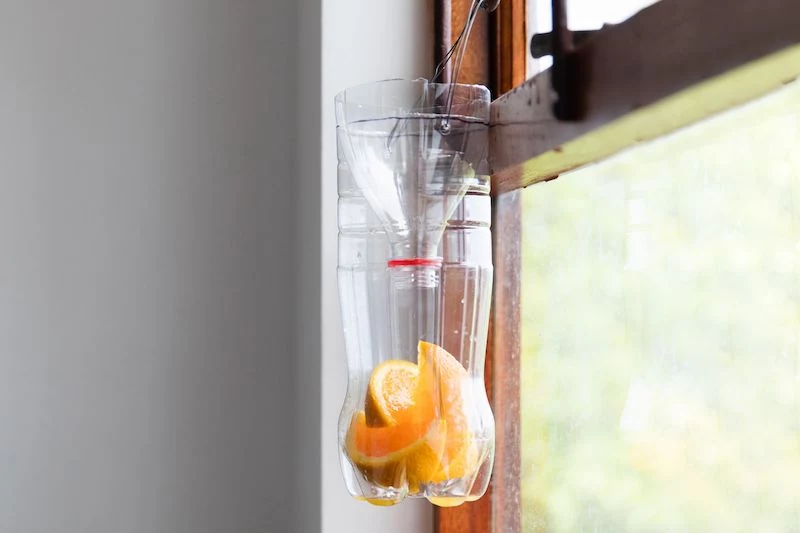
You can also make a decent repellent spray with essential oils. In a spray bottle, mix about 2 cups of water with 20 drops of peppermint, lemongrass, or eucalyptus oil and a teaspoon of dish soap (to help it mix). Spray it around doorways and windowsills. It works, but you have to reapply it daily. Heads up! If you have pets, do your research first. Peppermint oil, for example, is toxic to cats.
Special Cases: Apartments and Pet Owners
What if you live in an apartment and can’t control the shared dumpsters? Focus on what you can control. Be extra vigilant about your own trash, and use those window traps and door seals. You can also hang an outdoor trap on your balcony, as far from your door as possible, to intercept flies before they find your home.
For pet owners, the main concern is safety. Instead of bleach for cleaning your trash can, a good scrub with hot, soapy water and a long rinse will do. When it comes to pet waste in the yard, be diligent about cleanup. Bag it and get it into a sealed outdoor bin immediately. And as mentioned, always check which essential oils are safe around your specific pets before you start spraying.
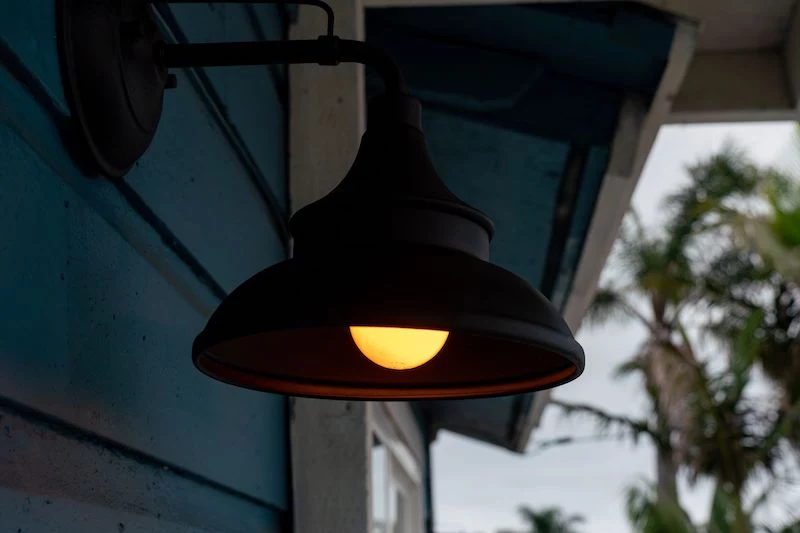
When to Call a Professional
Look, you can do a lot on your own. But sometimes, you need to call in reinforcements. It’s time to call a pro if:
- You’ve done all the cleaning and sealing, but the problem persists or gets worse.
- You suddenly have a massive, overwhelming infestation that seems to come from nowhere. This could signal a dead animal in a wall or crawlspace.
- You suspect the problem is cluster flies or another pest that is nesting inside your walls.
A good pest control service won’t just spray. They’ll help you identify the source, which is the key to a long-term solution. It’s an investment, but sometimes it’s the only way to get your sanity back.
Inspirational Gallery
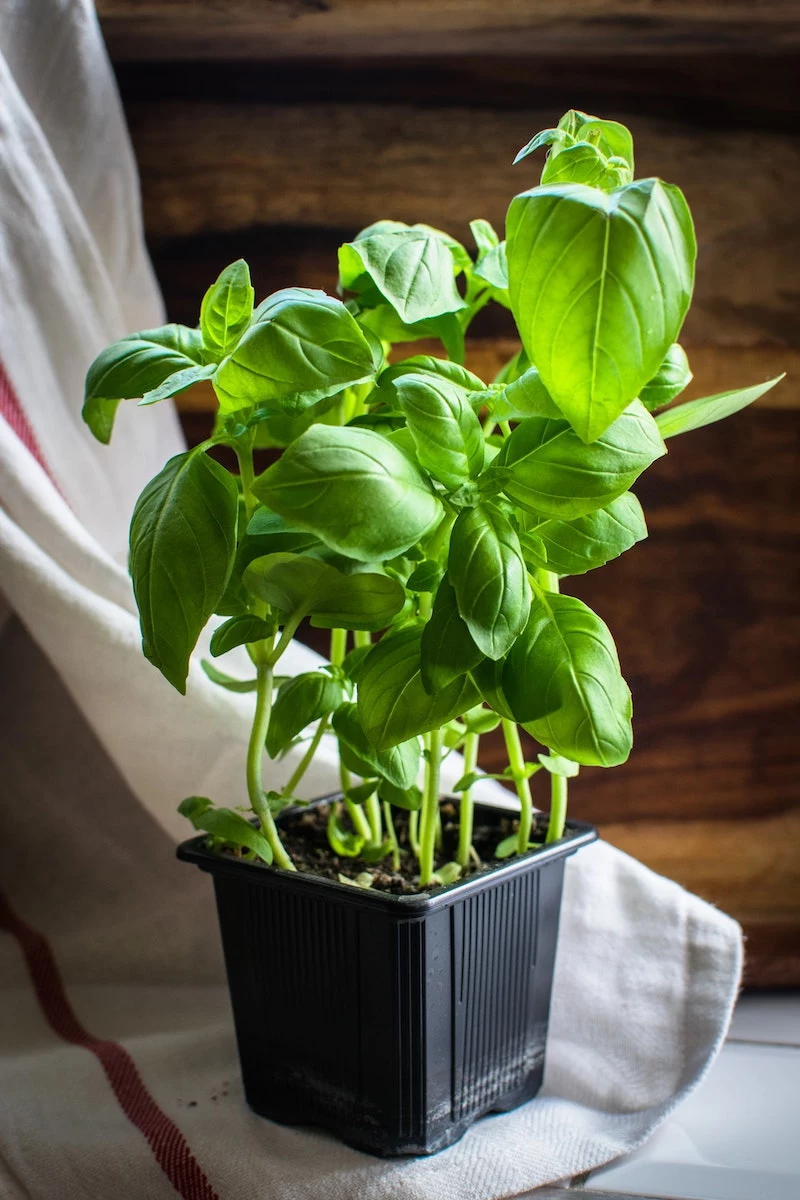

Beyond deep cleaning, you can leverage scents that flies naturally despise. This approach doubles as a pleasant home fragrance for you. Create a powerful, natural barrier with these simple additions:
- Place potted basil or mint on kitchen windowsills; their strong aroma is a well-known deterrent.
- For a more active solution, soak a few cotton balls in eucalyptus or lemongrass essential oil and tuck them discreetly near trash cans or pet food bowls.
- Simmering a small pot of water with cloves and a sliced orange on the stove can keep your kitchen fly-free for hours.
The High-Tech Trap: For a powerful, non-chemical solution on a patio or in a large room, an electric UV trap like the DynaTrap is a game-changer. It uses a specific UV wavelength and a whisper-quiet fan to attract and capture flies, mosquitoes, and other pests without zaps or odors.
The Discreet Indoor Catcher: For targeted spots like a sunny window, consider the new generation of decorative sticky traps from brands like TERRO or RESCUE!. Designed as subtle window decals or small, stylish objects, they catch flies without looking like a traditional, unsightly pest trap.
The choice depends on coverage: wide-area control versus localized interception.










